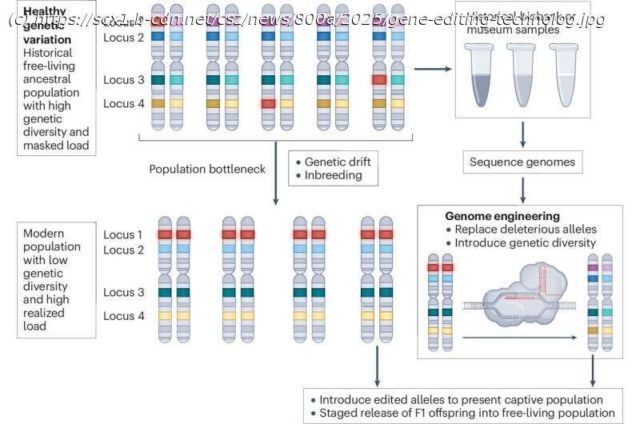Earth’s biodiversity is in crisis. An imminent „sixth mass extinction“ threatens beloved and important wildlife. It also threatens to reduce the amount of genetic diversity—or variation—within species.
Earth’s biodiversity is in crisis. An imminent „sixth mass extinction“ threatens beloved and important wildlife. It also threatens to reduce the amount of genetic diversity—or variation—within species.
This variation in genes within a species is crucial for their ability to adapt to changes in the environment or resist diseases. Genetic variation is therefore crucial for species‘ long term survival.
Traditional conservation efforts—such as protected areas, measures to prevent poaching, and captive breeding—remain essential to prevent extinction. But even when these measures succeed in boosting population numbers, they cannot recover genetic diversity that has already been lost. The loss of a unique gene variant can take thousands of years of evolution before it is recovered by a lucky mutation.
In a new paper in Nature Reviews Biodiversity, an international team of geneticists and wildlife biologists argues that the survival of some species will depend on gene editing, along with more traditional conservation actions. Using these advanced genetic tools, like those already revolutionizing agriculture and medicine, can give endangered species a boost by adding genetic diversity that isn’t there.
Genetic engineering is not new. Plant breeders have used it for decades to develop crops with traits to boost disease resistance and drought tolerance. Around 13.5% of the world’s arable land grows genetically modified crops. Gene-editing tools such as Crispr are also being used in „de-extinction“ projects that aim to recreate extinct animals.
The Dallas-based company Colossal Laboratory & Biosciences has attracted headlines for its efforts to bring back the woolly mammoth, dodo and dire wolf. In de-extinction, the DNA of a living relative species is edited (changed) to approximate the extinct species‘ most charismatic traits.
For example, to „resurrect“ a woolly mammoth, Colossal’s researchers plan to splice mammoth genes (recovered from ancient remains) into the genome of the Asian elephant to produce a cold-hardy, hairy elephant-mammoth hybrid. Colossal recently engineered gray wolf pups with 20 gene edits from the extinct dire wolf’s DNA.






